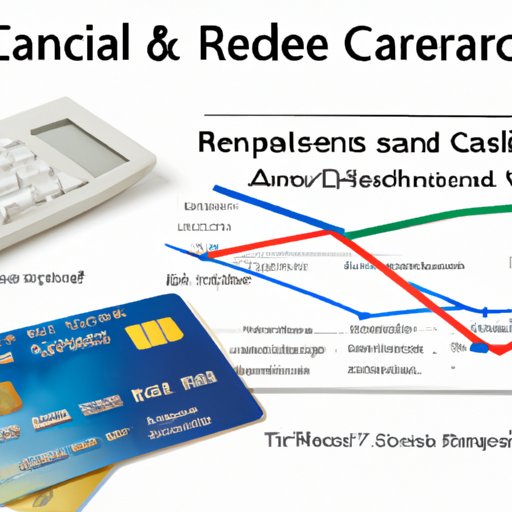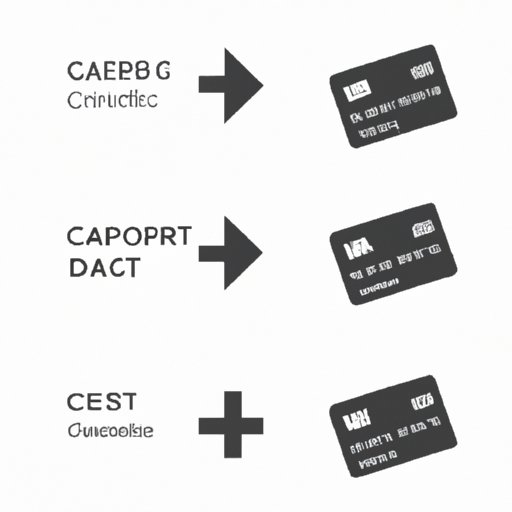Introduction
Credit cards are an integral part of many people’s financial lives. They offer convenient purchasing power, build credit history, and offer rewards programs. However, they also come with high interest rates, potential debt accumulation, and fraud risk. Understanding how credit cards work is essential for making informed decisions about your finances.

Explaining the Different Types of Credit Cards
There are several different types of credit cards available, each offering its own unique features and benefits. The two main types of credit cards are secured and unsecured cards. Secured credit cards require a deposit to be made before they can be used, while unsecured cards do not. Traditional credit cards usually have lower interest rates and no annual fee, while rewards cards offer points or cash back for purchases.
Store-specific credit cards are also available. These cards are tied to a particular store or retail chain, and often offer discounts or other rewards when used at that store or chain. While these cards may offer good deals, they typically have higher interest rates than traditional credit cards.
Breaking Down the Benefits and Risks of Using Credit Cards
Credit cards offer several advantages, including convenience, building credit history, and rewards programs. They are also accepted in more places than other payment methods, such as cash or checks. However, there are also risks associated with using credit cards. High interest rates, potential debt accumulation, and fraud risk are all possible drawbacks of using credit cards.
Advantages
One of the main benefits of using credit cards is the convenience they provide. Credit cards allow you to make purchases quickly and easily, without having to carry large amounts of cash or write checks. Additionally, using a credit card helps to build a positive credit history, which is essential for obtaining loans or other forms of credit in the future.
Many credit cards also offer rewards programs, which allow users to earn points or cash back for their purchases. For example, some cards offer airline miles, hotel points, or cash back for every dollar spent. Rewards programs can help to offset the cost of purchases, making it easier to manage your finances.
Disadvantages
The main disadvantage of using credit cards is the high interest rates associated with them. If you don’t pay your balance in full each month, the interest charges can quickly add up. Additionally, if you carry a balance from month to month, it can be difficult to pay off the entire amount, leading to potential debt accumulation.
Using credit cards also carries a risk of fraud. Criminals can use stolen credit card information to make unauthorized purchases, leaving the cardholder liable for any fraudulent charges. It’s important to protect your credit card information by only using it on secure websites and never giving out your account number over the phone or online.
Outlining the Process of Applying for a Credit Card
Applying for a credit card is relatively simple. The first step is to gather the necessary documentation, such as proof of income, bank statements, and ID. Once you have everything ready, you can submit an application either online or in person. The application will be reviewed by the credit card issuer, and if approved, you’ll receive a new credit card in the mail.
Before approving your application, the issuer will go through an underwriting process to determine whether you qualify for the card. This process involves looking at your credit score, income, and other factors. If you’re approved, you’ll receive the credit card in the mail, along with instructions on how to activate and use it.
Examining the Various Fees Associated with Credit Cards
In addition to interest rates, credit cards also come with several other fees. Annual fees are charged by some credit cards, usually based on the type of card or the amount of credit available. Balance transfer fees are charged when transferring a balance from one credit card to another, and cash advance fees are charged when withdrawing cash from an ATM.
Late payment fees are also common. These fees are charged if you don’t make your minimum payment by the due date. The amount of the fee varies depending on the card issuer, but it can be substantial. It’s important to always make payments on time to avoid these fees.

Understanding the Impact of Interest Rates on Credit Card Balances
Interest rates are one of the most important factors to consider when using a credit card. Interest is calculated based on the balance owed on the card, and is usually expressed as an annual percentage rate (APR). The APR is determined by several factors, including the cardholder’s credit score and the type of card they have.
High interest rates can significantly increase the amount of money you owe on your credit card balance. It’s important to understand the impact of interest rates when using a credit card, and to look for cards with lower APRs if possible.

Analyzing the Advantages and Disadvantages of Using Credit Cards
Credit cards are an important financial tool, but they come with both advantages and disadvantages. The convenience and rewards offered by credit cards can be beneficial, but the high interest rates and potential for debt accumulation can be problematic. It’s important to weigh the pros and cons of using credit cards before making a decision.
Advantages
Credit cards offer several advantages, including convenience, building credit history, and rewards programs. They are also accepted in more places than other payment methods, such as cash or checks. Additionally, using a credit card responsibly can help to improve your credit score over time.
Disadvantages
The main disadvantage of using credit cards is the high interest rates associated with them. If you don’t pay your balance in full each month, the interest charges can quickly add up. Additionally, if you carry a balance from month to month, it can be difficult to pay off the entire amount, leading to potential debt accumulation.
Using credit cards also carries a risk of fraud. Criminals can use stolen credit card information to make unauthorized purchases, leaving the cardholder liable for any fraudulent charges. It’s important to protect your credit card information by only using it on secure websites and never giving out your account number over the phone or online.
Conclusion
Credit cards are a valuable financial tool, but they come with some risks. Understanding how credit cards work is essential for making informed decisions about your finances. Knowing the types of credit cards available, the benefits and risks associated with using them, and the various fees they charge can help you make the best choice for your needs.
Summary of Key Points
Credit cards offer convenient purchasing power, build credit history, and offer rewards programs. However, they also come with high interest rates, potential debt accumulation, and fraud risk. There are several types of cards available, including secured, unsecured, traditional, rewards, and store-specific cards. Applying for a credit card involves gathering the necessary documentation and submitting an application. Fees associated with credit cards include annual fees, balance transfer fees, cash advance fees, and late payment fees. Interest rates are one of the most important factors to consider when using a credit card, as they can significantly increase the amount of money you owe.
Final Thoughts
Using a credit card responsibly can have many benefits, but it’s important to understand the potential risks associated with them. Knowing the types of cards available, the fees they charge, and the impact of interest rates on credit card balances can help you make the best choices for your finances.
(Note: Is this article not meeting your expectations? Do you have knowledge or insights to share? Unlock new opportunities and expand your reach by joining our authors team. Click Registration to join us and share your expertise with our readers.)
